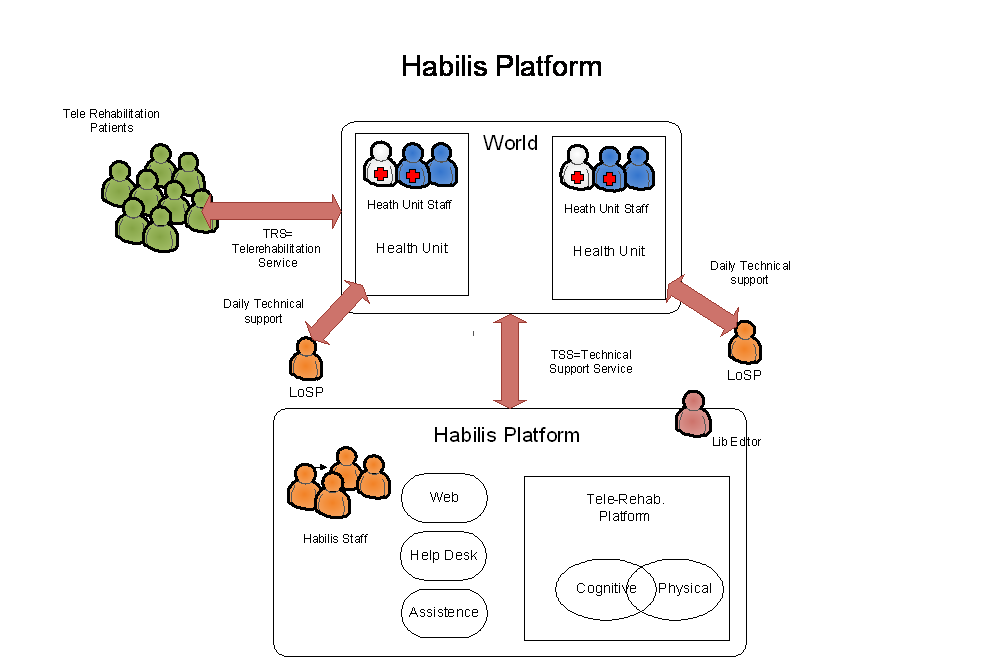Key points for Habilis Tele-rehabilitation guidelines
The CLEAR project proposes the implementation of an innovative telerehabilitation service in four Member States of the European Union (IT, ES, NL and PL), with the
ambition to convert the project after its completion and shown feasibility to a European platform to contribute to the harmonization of e-health services in the EU.
The rationale behind this project is the HABILIS EUROPE concept, which principal objective is to establish a network of companies, under a legal corporate entity, providing
an expandable set of telerehabilitation services across the whole EU, with significant potential to enhance the deployment of e-health services and optimization of healthcare
resources. The CLEAR project plans to carry out 4 pilot tests in the 4 Member States on home protocols and therapies developed on 4 types of pathologies usually affecting the
elderly: neurological, orthopaedic, pneumonic disorders and chronic pain.
The Habilis Telerehabilitation Service has been conceived as described in the picture below:

The Rehabilitation Centres provide the Tele-Rehabilitation service (TRS) to their patient by mean of the Habilis Platform. Patients can execute their rehabilitation tasks at home or at the nearest external rehabilitation unit (Kiosk), without the direct surveillance of the Therapists. The Platform registers their tasks, and allows the Therapists to asynchronously analyze them and assess the Patient’s progresses. When needed Therapist and Patients can communicate in videoconference. During videoconference the Therapists can assess the Patients status. The platform also provides tools and statistics to facilitate the monitoring of the patients compliance and progresses.
The Habilis staff provides the Technical Support Service (TSS) to Rehabilitation Centers. This includes the Telerehabilitation Platform Provision and the Assistance Service (help Desk, training, guidelines).
The Local Service Providers (LoSPs) are local providers that support the Rehabilitation centers to set-up and maintain the environment for telerehabilitation at the Patients home or in the kiosks.
To set-up the Telerehabilitation service standardized guidelines are needed to cover the following aspects related to the implementation of the Services:
- Management of the Service at the Clinical Centres:
- Organizational aspects;
- Clinical aspects;
- Administrative aspects;
- legal aspects (from the Hospital perspective).
- Administration of the Service to patients:
- Design of clinical trials within the CLEAR Telerehabilitation service;
- Education.
- Information/indications concerning Habilis National Agencies:
- Acceptance and introduction of the TR service within the own Country;
- Accreditation of the Service;
- Health Technology Assessment of the Service.
- Information/indications concerning Local Service Providers (LoSP):
- Technical Management;
- Accreditation of the LoSp.